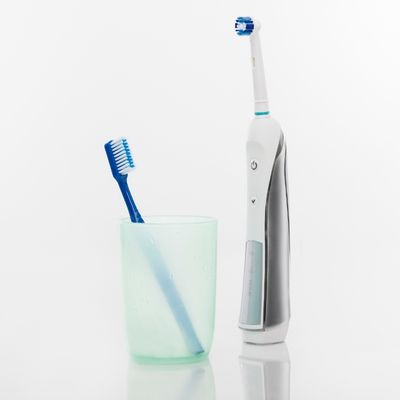Manual vs. Electric Toothbrushes: Which is Right for You?
An essential part of oral hygiene is tooth brushing, which helps remove food particles and plaque that can cause dental and oral diseases such as cavities. According to the Canadian Dental Association (CDA), both electric and manual toothbrushes help to remove oral plaque which causes decay and oral diseases.
Read on to learn how electric and manual toothbrushes work and which one you feel is best for you.
How do Manual Toothbrushes work?
Traditional manual toothbrushes have been around for a long time and can be easily obtained at any drugstore or supermarket. They are simple but effective tools for cleaning your teeth if used to brush your teeth twice a day, every day.
Benefits of Manual Toothbrushes
- Accessible
- Affordable
- Lightweight
- Speed control
- Easy to maintain (No charging/batteries required)
Cons of Manual Toothbrushes
- Relies on the user to determine the correct pressure and duration
- Doesn't clean as deeply as an electric brush
How do Electric Toothbrushes work?
Although manual toothbrushes are commonly used, some people can brush their teeth too aggressively with them. Vigorous brushing or pressure might damage your gums and teeth.
Scientists have shown that those who use an electric toothbrush have healthier gums, less tooth decay, and preserve their teeth for longer than people who use a manual toothbrush. The bristles of an electric toothbrush rotate or vibrate to aid in removing plaque accumulation from your teeth and gums. Every time you brush your teeth, more micro-movements are possible because of the vibration. Due to busy lifestyles, most people don't brush often or long enough, so an electric toothbrush can benefit most lifestyles. Many electric toothbrushes have a built-in timer, which can help ensure that you are brushing your teeth for a sufficient length of time.
Benefits of Electric toothbrush
- Very effective and efficient
- User-Friendly, can be helpful for those with mobility difficulties
- Many have Removable / Disposable / Replaceable heads
- Built-in-timer
- Fun for kids!
- Safe for gums
- Allows for Deeper Cleaning
- Helps with stain removal
Cons of Electric toothbrush
- More expensive
- Can be hard to find or replace with the correct brush head
- Plug-in versions may restrict usage while travelling internationally
All toothbrushes need to be replaced every three to four months according to the CDA (Canadian Dental Association).
At the end of the day, whether electric or manual brushes are a better solution for you depends on a variety of factors. Your dentist can help make a personalized recommendation to pick out the best toothbrush for you. Contact our office today!




